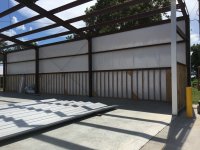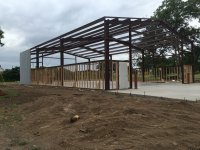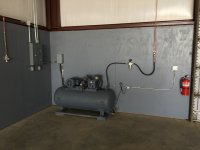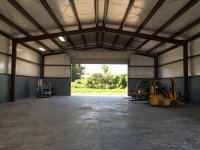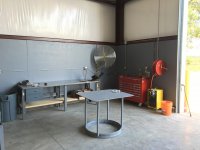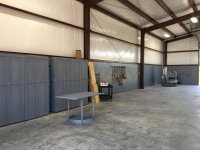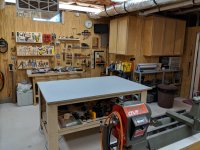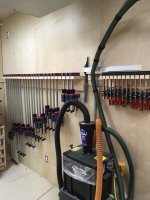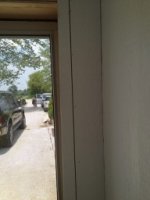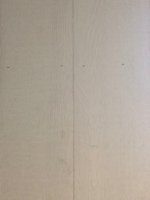ryanjg117
Member
- Joined
- May 18, 2015
- Messages
- 333
I'm looking to finish my 1,100 square foot detached workshop. Right now it is insulated just on the side walls, with otherwise open studs. I've got a quote of about $1,500 delivered for the 75 pieces of 12x4 foot drywall (1/2" for the walls and 5/8" lightweight for the ceilings, attaching to joists 24" OC) and mud/tape. That's with me (and a friend or two, I hope) doing all the heavy lifting.
Watching April Wilkerson's new shop build-out on YouTube and I noticed she used a pretty low grade plywood for the interior walls rather than drywall. I'm not a huge fan of cheap plywood as I've had to many unhappy projects built with it, but I do like the idea of being able to drive a screw and mount a tool anywhere in the shop. That said, I still think I'll be hunting for studs to mount the heavy stuff... And now that I'm thinking this through, I wonder if a studfinder would even work through plywood?
Maybe I just answered my own question here and I'll stick to drywall, with my own french cleat system I'll install later attaching to the studs.
But curious if there are any other good alternatives to drywall, which aren't terrifically more expensive?
Thanks!
Watching April Wilkerson's new shop build-out on YouTube and I noticed she used a pretty low grade plywood for the interior walls rather than drywall. I'm not a huge fan of cheap plywood as I've had to many unhappy projects built with it, but I do like the idea of being able to drive a screw and mount a tool anywhere in the shop. That said, I still think I'll be hunting for studs to mount the heavy stuff... And now that I'm thinking this through, I wonder if a studfinder would even work through plywood?
Maybe I just answered my own question here and I'll stick to drywall, with my own french cleat system I'll install later attaching to the studs.
But curious if there are any other good alternatives to drywall, which aren't terrifically more expensive?
Thanks!

